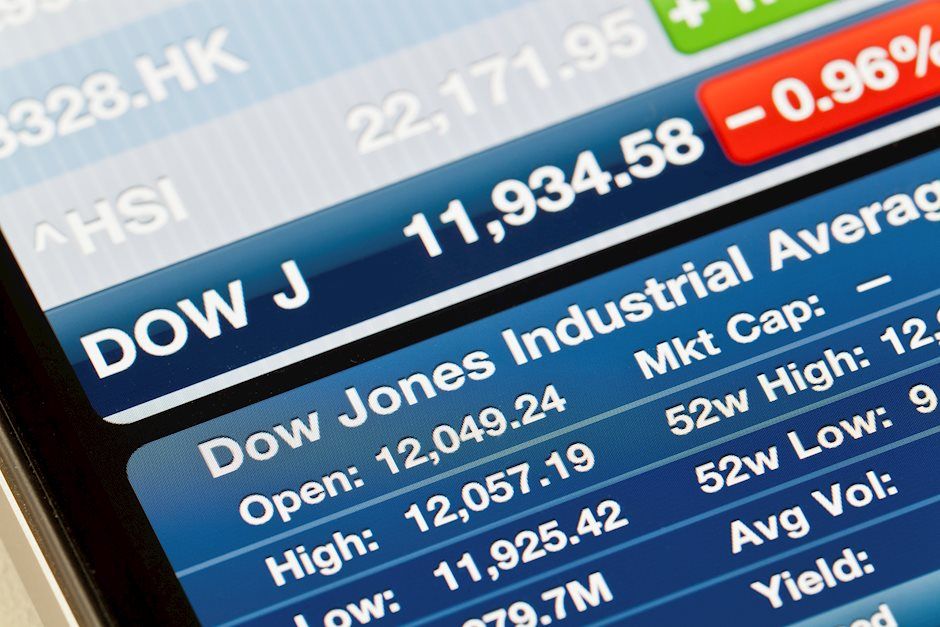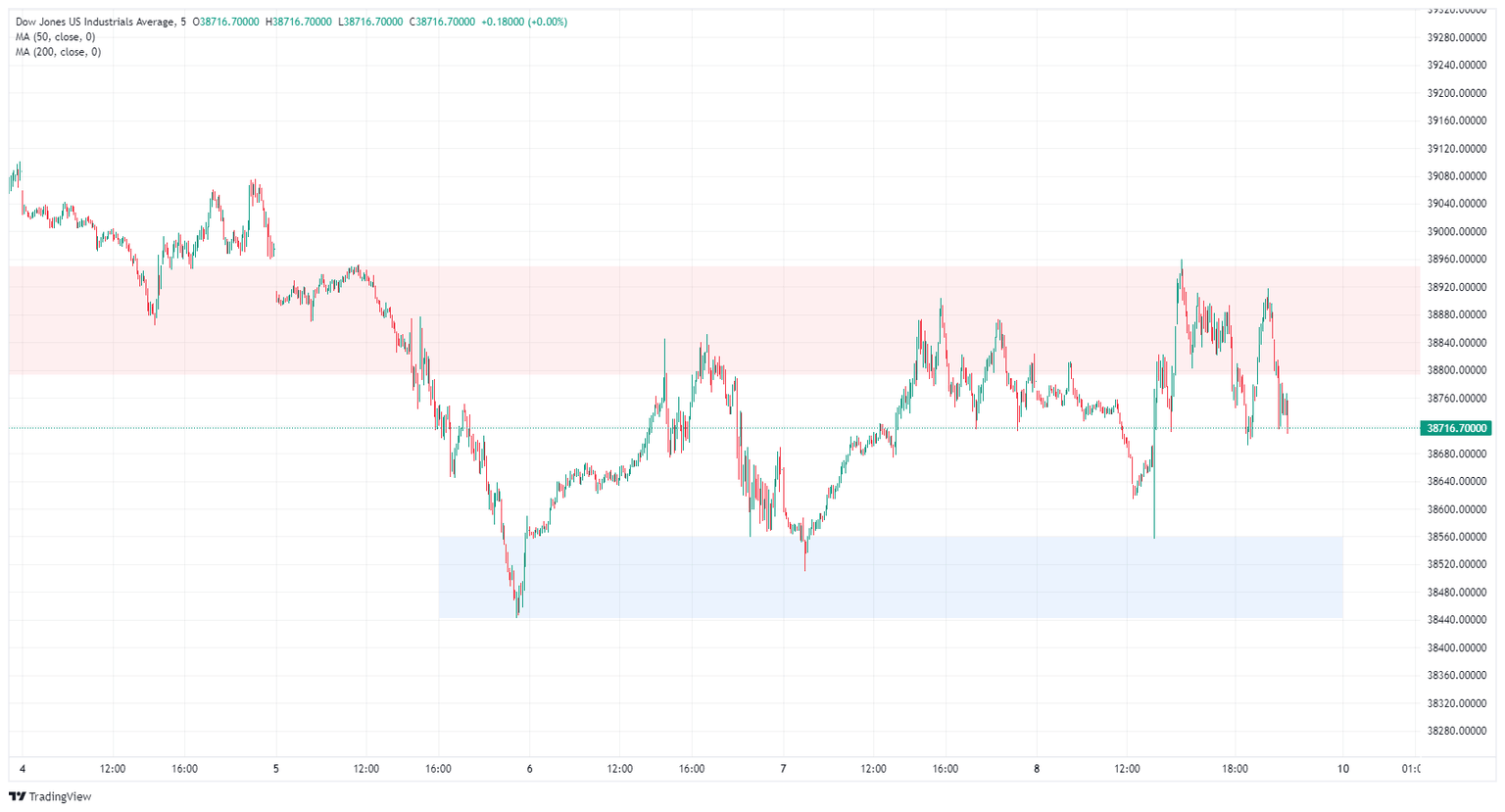Dow Jones Industrial Average Forecast: DJIA falls on Friday, but sheds less weight against other indexes
- Dow Jones is in the green on Friday after a mixed US NFP print.
- The S&P 500 and NASDAQ indexes are in the red on the day.
- US NFP jobs data came in better than expected, but with steep revisions.

The Dow Jones Industrial Average (DJIA) eked out slim gains around a quarter of a percent before ending in the red after US Nonfarm Payrolls (NFP) came in wildly mixed, sending broader markets into a confused tailspin. Equities gave a mixed performance as investors grappled with a still-firm US labor market and deep revising cuts to previous data.
Friday’s NFP print showed the US added 275K net new jobs in February, well above the forecast 200K, but January’s print saw a steep revision to 229K. The previous NFP print initially showed an 11-month high of 353K additions, and the large revision is hobbling the market’s ability to pick a direction to wrap up the trading week.
Dow Jones news: Markets reprice rate cut bets, Apple gains pare Intel losses
Friday’s mixed NFP print increased rate market bets that the Federal Reserve (Fed) will trim interest rates at the Federal Open Market Committee’s June rate call. According to the CME’s FedWatch Tool, rate futures are pricing in 75% of at least a 25 basis point trim in June. Investors are shrugging off warnings from Fed Chairman Jerome Powell this week that inflation is still not at a satisfactory level for the US central bank to begin weighing action on interest rates. Markets are hoping that the Fed will get bullied into rate cuts before the end of H1 2024 with not-as-good-as-expected economic figures.
The DJIA's worst-performing stock on Friday was Intel Corp. (INTC), down 4.66% and hitting the closing bell at $44.00 per share. 3M Co. (MMM) is the DJIA's best performer, gaining nearly 1.4% and ending Friday at $93.90.
Other Friday gainers listed on the Dow Jones include Cisco Systems Inc. (CSCO) and Apple Inc. (AAPL), gaining around 1.2% and 1.0% respectively. On the downside, Boeing Corp. (Boeing) also shed weight, closing down 2.24% at $198.49, and the airline stock is down significantly from December’s peak at $267.54.
Dow Jones FAQs
What is the Dow Jones?
The Dow Jones Industrial Average, one of the oldest stock market indices in the world, is compiled of the 30 most traded stocks in the US. The index is price-weighted rather than weighted by capitalization. It is calculated by summing the prices of the constituent stocks and dividing them by a factor, currently 0.152. The index was founded by Charles Dow, who also founded the Wall Street Journal. In later years it has been criticized for not being broadly representative enough because it only tracks 30 conglomerates, unlike broader indices such as the S&P 500.
What factors impact the Dow Jones Industrial Average?
Many different factors drive the Dow Jones Industrial Average (DJIA). The aggregate performance of the component companies revealed in quarterly company earnings reports is the main one. US and global macroeconomic data also contributes as it impacts on investor sentiment. The level of interest rates, set by the Federal Reserve (Fed), also influences the DJIA as it affects the cost of credit, on which many corporations are heavily reliant. Therefore, inflation can be a major driver as well as other metrics which impact the Fed decisions.
What is Dow Theory?
Dow Theory is a method for identifying the primary trend of the stock market developed by Charles Dow. A key step is to compare the direction of the Dow Jones Industrial Average (DJIA) and the Dow Jones Transportation Average (DJTA) and only follow trends where both are moving in the same direction. Volume is a confirmatory criteria. The theory uses elements of peak and trough analysis. Dow’s theory posits three trend phases: accumulation, when smart money starts buying or selling; public participation, when the wider public joins in; and distribution, when the smart money exits.
How can I trade the DJIA?
There are a number of ways to trade the DJIA. One is to use ETFs which allow investors to trade the DJIA as a single security, rather than having to buy shares in all 30 constituent companies. A leading example is the SPDR Dow Jones Industrial Average ETF (DIA). DJIA futures contracts enable traders to speculate on the future value of the index and Options provide the right, but not the obligation, to buy or sell the index at a predetermined price in the future. Mutual funds enable investors to buy a share of a diversified portfolio of DJIA stocks thus providing exposure to the overall index.
Dow Jones Industrial Average forecast
The Down Jones ticked into a new high on Friday, testing 38,960.00 before falling back into range, but the major equity index lost the least of the major indexes as markets wind down ahead of the week’s closing bell. The DJIA failed to close bullish and snapped a two-day winning streak as the index struggles to recover from a near-term decline from February’s all-time highs of 39,281.86.
The DJIA recovered from the week’s bottom bids near 38,440.00, but buyers were unable to recover the week’s early peak at 39,075.61.
Dow Jones Industrial Average, 5-minute chart

Nonfarm Payrolls FAQs
What are Nonfarm Payrolls?
Nonfarm Payrolls (NFP) are part of the US Bureau of Labor Statistics monthly jobs report. The Nonfarm Payrolls component specifically measures the change in the number of people employed in the US during the previous month, excluding the farming industry.
How does Nonfarm Payrolls influence the Federal Reserve monetary policy decisions?
The Nonfarm Payrolls figure can influence the decisions of the Federal Reserve by providing a measure of how successfully the Fed is meeting its mandate of fostering full employment and 2% inflation.
A relatively high NFP figure means more people are in employment, earning more money and therefore probably spending more. A relatively low Nonfarm Payrolls’ result, on the either hand, could mean people are struggling to find work.
The Fed will typically raise interest rates to combat high inflation triggered by low unemployment, and lower them to stimulate a stagnant labor market.
How does Nonfarm Payrolls affect the US Dollar?
Nonfarm Payrolls generally have a positive correlation with the US Dollar. This means when payrolls’ figures come out higher-than-expected the USD tends to rally and vice versa when they are lower.
NFPs influence the US Dollar by virtue of their impact on inflation, monetary policy expectations and interest rates. A higher NFP usually means the Federal Reserve will be more tight in its monetary policy, supporting the USD.
How does Nonfarm Payrolls affect Gold?
Nonfarm Payrolls are generally negatively-correlated with the price of Gold. This means a higher-than-expected payrolls’ figure will have a depressing effect on the Gold price and vice versa.
Higher NFP generally has a positive effect on the value of the USD, and like most major commodities Gold is priced in US Dollars. If the USD gains in value, therefore, it requires less Dollars to buy an ounce of Gold.
Also, higher interest rates (typically helped higher NFPs) also lessen the attractiveness of Gold as an investment compared to staying in cash, where the money will at least earn interest.
Sometimes Nonfarm Payrolls trigger an opposite reaction than what the market expects. Why is that?
Nonfarm Payrolls is only one component within a bigger jobs report and it can be overshadowed by the other components.
At times, when NFP come out higher-than-forecast, but the Average Weekly Earnings is lower than expected, the market has ignored the potentially inflationary effect of the headline result and interpreted the fall in earnings as deflationary.
The Participation Rate and the Average Weekly Hours components can also influence the market reaction, but only in seldom events like the “Great Resignation” or the Global Financial Crisis.
Author

Joshua Gibson
FXStreet
Joshua joins the FXStreet team as an Economics and Finance double major from Vancouver Island University with twelve years' experience as an independent trader focusing on technical analysis.

















